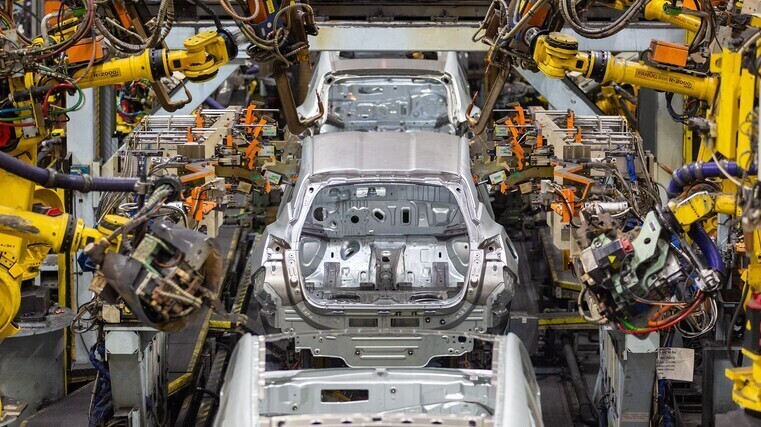Moody’s outlook on merger

Moody’s Ratings, which provides financial research on companies and government entities, has highlighted the advantages to Nissan merging with Honda.
Dean Enjo, vice-president and senior analyst, says: “The proposed integration is overall credit positive if executed successfully.
“We believe that a larger scale through integration will result in stronger credit quality, particularly for Nissan, which currently has significantly weaker credit metrics than Honda.
“Integration would allow the automakers to share research and development costs, which will be beneficial for the introduction of new electrified powertrain models in regions such as China.”
Enjo adds that the deal could help mitigate the potential effects of increased tariffs on imports into the US and enhance product diversification for Nissan given Honda’s higher-margin motorcycle business.
“On the other hand, execution risk is high especially for Honda, which has lower margins in its automotive business compared to its motorcycle business.
“This gives it less flexibility in absorbing Nissan’s automotive business, which is under heavy restructuring and loss-making.
“The trillion-yen buyback announced by Honda for its own shares is credit negative for Honda as it will erode its liquidity or credit metrics depending on the amount of cash or debt it uses to fund the buyback.”
Uncertainty at UK factory
Thousands of workers at Nissan’s UK factory in Sunderland, pictured above, are facing uncertainty with the marque entering merger talks with Honda.
Trade union Unite has sought assurances after details emerged of the planned tie-up of the major Japanese firms, together with smaller rival Mitsubishi.
The companies argue that combining their firepower makes sense as they fight back against the likes of Tesla and cheaper Chinese manufacturers amid the switch to EVs.
The combined group after a Nissan-Honda merger would create the world’s third biggest automotive manufacturer.
It adds to the uncertainty surrounding Nissan's Sunderland plant. In November 2024, the company announced proposals to cut 9,000 jobs, which equates to seven per cent of its global workforce.
Currently, the car factory – the biggest in the UK – employs more than 6,000 people. It builds the Qashqai, Juke and Leaf. Nissan has yet to comment say whether or how Sunderland might be affected by the merger announcement.
Sunderland is currently operating at half-capacity and it has been reported that the possibility of Honda producing vehicles there has been discussed by executives.
If that were to happen, it would mark a return to UK car manufacturing for the company, which once employed thousands at its Swindon plant but closed the site in 2021, blaming Brexit, reports the Daily Mail.
Although it has been billed as a merger, observers say Honda is effectively taking over Nissan and Mitsubishi because it will choose most of the directors for the new owner of the three Japanese car marques, including key executives.
Future in south-east Asia
Mitsubishi Motors is seen as the key to expanding the presence of Honda and Nissan in south-east Asia as they discuss integrating their businesses.
Mitsubishi Motors, which is considering joining the integration, already has some brand power in south-east Asia, reports The Japan News.
While Chinese carmakers are rapidly increasing their influence, the key to capturing the growing market for Honda and Nissan will depend on whether Mitsubishi joins them.
Mitsubishi Motors entered south-east Asia in earnest in the 1960s by establishing a sales network in co-operation with Mitsubishi Corporation. The carmaker has built a market for pick-up trucks and other products tailored to local needs.
Mitsubishi Motors’ global sales in the 2023 financial year came in at 810,000 units with about 30 per cent of those sales within the Association of South-east Asian Nations region.
In Indonesia, the region’s largest market, Japanese marques have a total market share of about 90 per cent. Mitsubishi Motors’ share of new-vehicle sales from January to November 2024 was right per cent, ranking fourth behind Toyota, Daihatsu and Honda. In contrast, Nissan’s share is only 0.1 per cent.
If Mitsubishi Motors joins the business integration, and can combine its development capabilities and sales network with those of Honda, this may lead to an improvement in the competitiveness of its cars. Honda has a share of almost 80 per cent of the motorcycle market in Indonesia.
That said, Chinese brands are stepping up their offensive to challenge Japanese dominance of south-east Asia’s car market. In Thailand, there are signs of some change.
New-car sales in Thailand from January to October totalled about 470,000 with the nine Japanese marques having a combined market share of 76 per cent. But that’s down from the 90 per cent they once had.
China’s BYD has already surpassed Mitsubishi Motors in market share in Thailand. In response to the Thai government’s intention to make the country a major production base for EVs, Chinese companies are aggressively investing there. Honda, Nissan and Mitsubishi Motors all have plants for finished vehicles in Thailand.
At the time of Nissan’s acquisition of a major stake in Mitsubishi Motors in 2016, there was a plan for the latter to have full responsibility for south-east Asian operations.
If the integration of the three companies is realised, the reorganisation of that region’s production bases is seen as inevitable as the market share of Chinese brands expands.
Honda and Nissan “fight back”
Nissan and Honda’s planned merger aims to seek to “fight back” against competition from the Chinese car industry, the companies say.
The potentially multi-billion-dollar deal to combat “the rise of Chinese power” is a key driver behind the plan, says Honda’s chief executive Toshihiro Mibe. It needs to be in place by 2030 or they risk being “beaten” by rivals.
“There is a rise of Chinese power and emerging forces, and the structure of the automobile industry is changing,” says Mibe.
Growing competition in China has left many car makers struggling to compete as lower labour and manufacturing costs make local companies more nimble and able to price their goods lower than foreign counterparts.
In October 2024, EU officials claimed the Chinese government was unfairly subsidising its EV makers and announced big taxes on imports of EVs from China to the EU, after the majority of member states backed the plans.
The tariffs are set to rise from 10-45 per cent for the next five years, but there are concerns it could raise EV prices higher for buyers.
Nissan’s chief executive, Makoto Uchida, says: “The talks started because we believe that we must build up capabilities to fight them, including the current emerging forces, by 2030. Otherwise, we will be beaten.”
He adds the deal isn’t a bailout of Nissan, which has been struggling with falling sales.
The company, once a symbol of Japan’s car-making strength, has spent the past few years trying to regain its footing after the arrest of long-time chief executive Carlos Ghosn.
He faced charges of financial misconduct when he fled Japan in 2019 and is the subject of an Interpol Red Notice, which is a request to law enforcement worldwide to find and arrest a person.
Ghosn, currently in Lebanon, told reporters in December that Nissan’s merger plans were an act of panic and desperation.
Mibe notes any merger would be dependent on the turnaround of Nissan. However, any deal is likely to come under intense political scrutiny in Japan as it may result in job cuts.
Risks connected to merger
Forward-looking statements issued by Nissan and Honda when the merger announcement was made outlines the risks, uncertainties and other factors with the way forward. These include:
• Changes in the economic situation, market demand and competitive environment surrounding the automobile market in and outside Japan.
• Financial uncertainty domestically and internationally, or changes in other general economic or industry situation.
• Interest rates, other market risks and changes in the credit ratings of the companies.
• Changes in laws and regulations related to their business activities, and increases in tariffs and the introduction of import regulations.
• Failure to finalise the definitive agreements concerning integration.
• Delays in the review or approvals from relevant authorities needed for the merger or failure to obtain such approvals.
• The possibility of not being able to realise the synergies or added value expected from the integration or achieving them becomes difficult.
AUTOFILE ONLINE – BRINGING YOU THE NEWS THAT MATTERS WHEN IT HAPPENS





